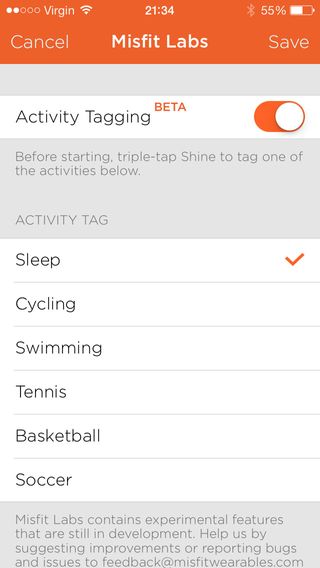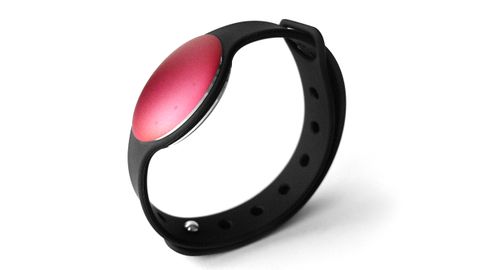Why you can trust TechRadar
The wearables market is about to take off, and the Misfit Shine is a perfect example of what some people will be looking for. Discreet with no need to mess around with charging, there's going to be a lot to entice people in.
It's not too expensive, but nor is it the cheapest out there - so would we recommend it in the ever-muddying waters of the wearable space?
We liked

With zero cables and an elegant design, Shine is the best-looking, lowest-maintenance activity tracker yet. We love the Bluetooth connectivity, the long battery life, the low-profile design and the choice of where to wear it.
The Shine app has its good points, too. The data it collects contributes to a weekly analysis graph hidden behind a small diary icon. As well as being able to scroll through brief summaries of this and previous weeks (the same steps taken/calories burned/miles walked summary available for each day), there's a graph that tracks your progress – distance walked – as the week went on, compared to an average.
Below is an icon of each day of the week with how much progress you made each day. I went as low as 6% one day (when the Shine lay forgotten on the bedroom floor) and as high as 195% on another day spent shopping. There's also a figure that represents how more or less active you were compared to the previous week.
This is perhaps where the Shine app does its best work, informing us that in the two weeks testing I walked about 25 miles per week, which after a few weeks begins to give you some gauge of your own fitness.

We disliked
While some activity tracker's apps – the Jawbone UP in particular – swap data with other apps, Shine's is pretty, but vacant, and the rather passive analysis isn't of much help. Its use of points is just confusing.
Nor is it very motivating, with no messages prompting you to move or get active. That could be considered a good thing, but it's all too easy – partly because of the great design – to forget all about Shine.
That does mean that after the honeymoon-period is over, Shine will continue to collect movement data, but it does have some limitations.
Mostly, the Shine device needs to acknowledge a triple-tap if it wants to appeal to casual users who want to record how often they swim/cycle/play football. During my test some fairly intense swims were downplayed as 'kinda active' periods, which is quite dispiriting when you know that your entire week's activity record will now be wrong.
A flutter of LEDs would do it. Showing the time in an unreadable, alien-like binary manner is just confusing, and even moving it between the (expensive) accessories can be quite annoying if you want to transition it into an androgynous dinner watch from a simple lapel clip.
Verdict
It's clear that the Misfit Shine has been developed to help take the humble sensor-ridden wristband to a whole new level. As something to look at, it really works and we love its low-maintenance status too.
However, there are problems. Recording specific activities – even sleep – is tricky to execute, largely because it's hard to know whether Shine has received and processed the all-important triple-tap. What's the point in being waterproof if it's almost impossible to record a swim?

There's also the likelihood that you'll forget all about the Shine once it's attached, though it is so much easier to wear for long periods than any other wristband we've tried.
However, the real weakness is the app, which doesn't integrate with any external apps and appears slow to link with the Shine device (despite being tested on an iPhone 5S) and doesn't offer much analysis.
Even if so-called self-quantification does catch on, I'm not sure the Misfit Shine is anything other than a well-designed distraction.
Jamie is a freelance tech, travel and space journalist based in the UK. He’s been writing regularly for Techradar since it was launched in 2008 and also writes regularly for Forbes, The Telegraph, the South China Morning Post, Sky & Telescope and the Sky At Night magazine as well as other Future titles T3, Digital Camera World, All About Space and Space.com. He also edits two of his own websites, TravGear.com and WhenIsTheNextEclipse.com that reflect his obsession with travel gear and solar eclipse travel. He is the author of A Stargazing Program For Beginners (Springer, 2015),


